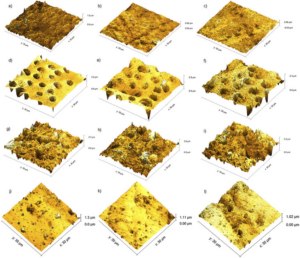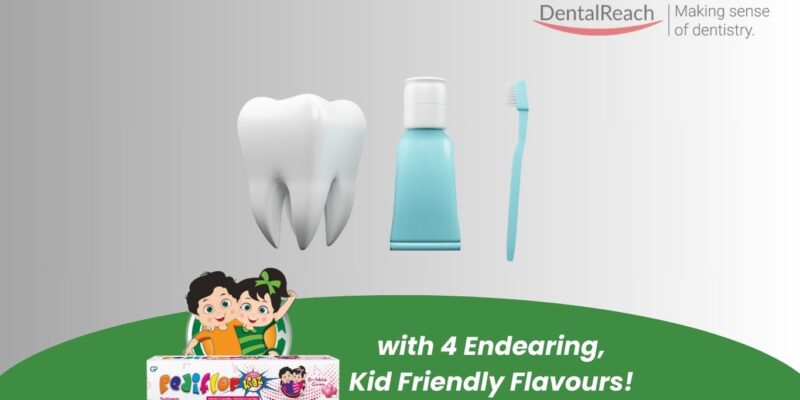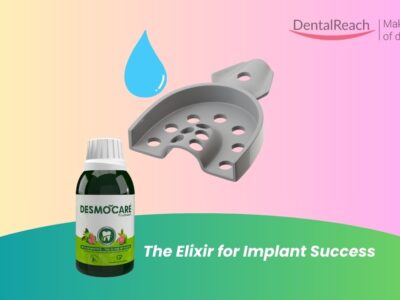A recent study evaluated the effects of different types of toothpaste on the surface wear of dental substrates and restorative materials, shedding light on erosion-abrasion challenges faced in modern dental practice. Using bovine incisors and advanced atomic force microscopy (AFM) imaging, the study offers new insights into how sodium fluoride (NaF) and stannous fluoride (SnF2) formulations compare in their impact on enamel, dentin, composite resin (CR), and resin-modified glass ionomer cement (RMGIC)
Methodology: A Rigorous Approach to Simulating Clinical Conditions
The study’s methodology involved 140 bovine incisors divided into enamel and dentin groups, with restorations of either CR (Filtek Z350 XT) or RMGIC (Fuji II LC). Specimens were subjected to a 5-day erosion protocol with citric acid, simulating the most common acidic challenges in beverages. To replicate realistic clinical conditions, erosion-abrasion cycles were performed using toothpastes with varied formulations:
- Fluoride-free toothpaste (WF)
- Sodium fluoride-based toothpaste (NaF)
- Stannous fluoride-based toothpaste (SnF2)
Profilometry, considered the gold standard for measuring tissue loss, provided quantitative data, while AFM revealed detailed surface changes at the molecular level.

Materials used in the study
Key Findings
- Surface Wear and Erosion:NaF-based toothpaste caused significantly higher wear on dentin adjacent to CR and RMGIC, corroborating previous findings that NaF is less effective in extremely acidic conditions.
SnF2-based toothpaste caused greater damage at the enamel-RMGIC interface compared to WF and NaF toothpaste, likely due to silica abrasive particles that bind to stannous ions, reducing their anti-erosive efficacy. - Topographic Changes:AFM images revealed partial occlusion of dentinal tubules by fluoride toothpaste, which could offer some protection against future acid attacks. However, enamel prism structures appeared smoothened, suggesting the abrasive effect of brushing combined with citric acid erosion.
- Restorative Material Performance:CR demonstrated higher resistance to wear, attributed to its robust matrix composition and evenly distributed inorganic particles.
RMGIC, by contrast, showed significant surface alterations, with cracks and exposed glass particles, particularly under SnF2-based toothpaste. - Protective Potential of SnF2:Despite its anti-erosive reputation, SnF2’s protective effects were hindered by its interaction with abrasive particles, emphasizing the complex role of toothpaste composition.

(a, b, and c): eroded enamel brushed with WF, NaF, and SnF2 toothpastes, respectively; (d, e, and f): eroded dentin brushed with WF, NaF, and SnF2 toothpastes, respectively; (g, h, and i): eroded RMGIC brushed with WF, NaF, and SnF2 toothpastes, respectively; (j, k, and l): Eroded CR brushed with WF, NaF, and SnF2 toothpastes, respectively
Clinical Implications
This study highlights the importance of choosing toothpaste formulations based on the patient’s dental condition and restoration type. Key takeaways include:
- For Patients with Restorations: NaF-based toothpaste may not provide sufficient protection for enamel adjacent to restorative materials like RMGIC. SnF2-based toothpastes should be used cautiously due to their potential to damage restoration interfaces.
- Tailoring Anti-Erosive Therapy: Dentists should consider the interplay between toothpaste abrasives, fluoride type, and restorative material properties when recommending oral hygiene products.
Limitations and Future Directions
The absence of salivary biofilm and dental pellicle in this in vitro study limits direct clinical application. Additionally, further research is needed to investigate the chemical interactions between eroded dental substrates and restorative materials.
Conclusion
NaF-based toothpaste failed to protect dental tissues and restorative materials from erosion-abrasion challenges, while SnF2-based toothpaste showed mixed results due to its interaction with abrasive particles. The study underscores the need for personalized toothpaste recommendations and further investigation into anti-erosive formulations.
Source: Journal Of Oral Science




















Comments